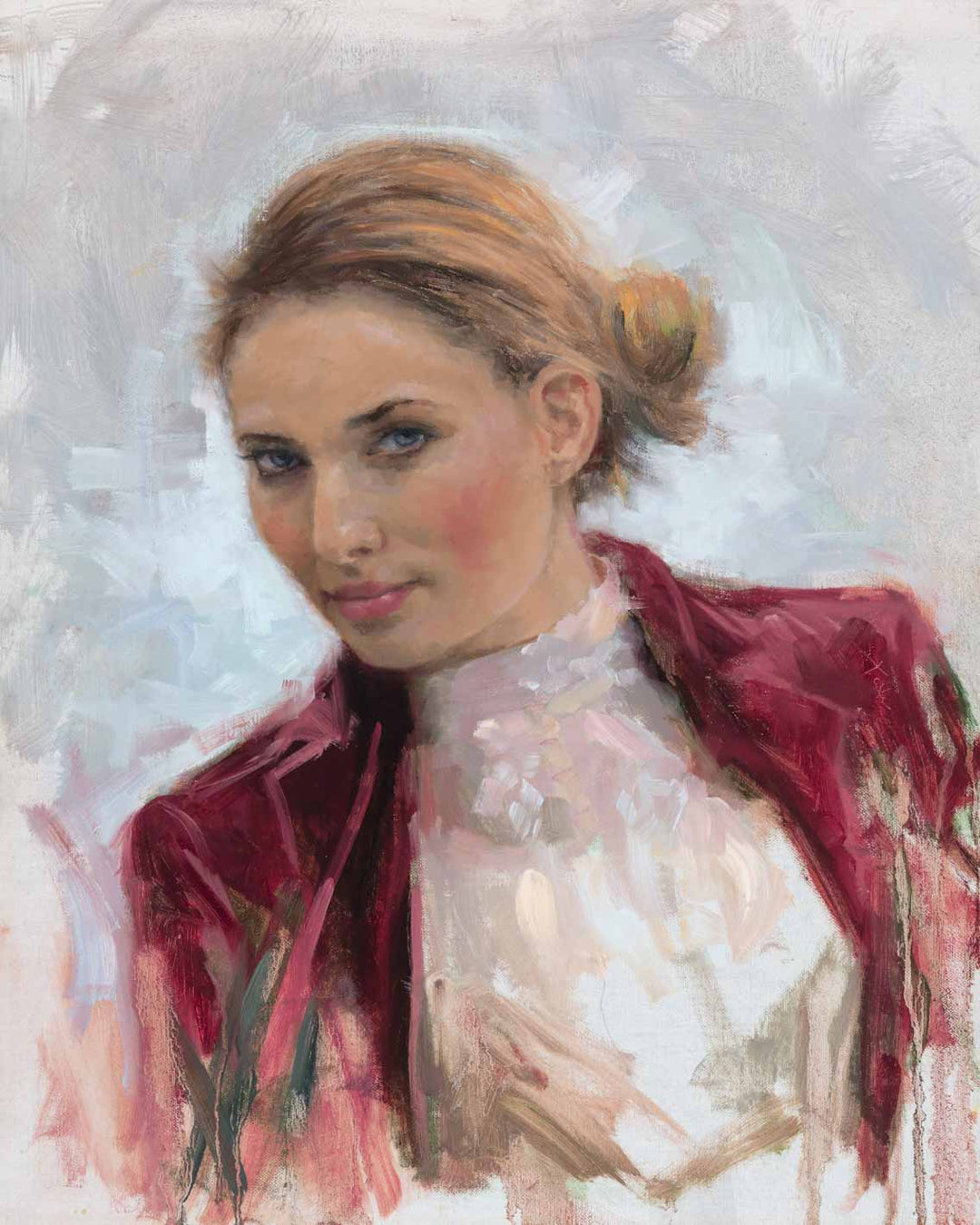Budget-Friendly New and Old Oil Paintings for Sale
Budget-Friendly New and Old Oil Paintings for Sale
Blog Article
Discovering Everything About Oil Paints: A Guide to Understanding Their Elegance and Value
Oil paints have mesmerized audiences for centuries, supplying a peek right into the creative mastery of numerous eras. Their abundant history is intertwined with ingenious methods and extensive emotional expression. Understanding the products and techniques behind these art work can improve admiration. Furthermore, the market for oil paints offers opportunities for investors and collectors alike. As one explores this fascinating globe, the inquiry occurs: what makes an oil paint truly important?
The History of Oil Painting: A Journey Through Time
Although oil painting has origins that go back to ancient times, it absolutely flourished during the Renaissance, when musicians found its convenience and rich shade potential. Early examples can be traced to the 7th century, with techniques evolving significantly across cultures. The tool came to be popular in Northern Europe in the 15th century, specifically via the works of artists like Jan van Eyck, who pioneered its use for in-depth realism and lively hues. This period noted a departure from tempera paints, allowing for greater depth and texture. As oil painting spread, it influenced many artists, leading to work of arts by distinguished figures such as Leonardo da Vinci and Rembrandt. The tool's tradition proceeds, shaping the art world well right into modern-day times.
Understanding Oil Paints: Products and Techniques
As artists explore the globe of oil paints, they encounter a diverse selection of materials and strategies that define this medium. The primary elements of oil paint include pigments, which provide shade, and drying oils, such as linseed, that bind the pigments and facilitate application. Numerous ingredients can customize the paint's structure and drying time, boosting versatility. Methods like glazing, where transparent layers are accumulated, and impasto, which entails using thick paint, permit different aesthetic effects. Additionally, using brushes, palette blades, and even fingers can create unique textures and coatings. Recognizing these materials and strategies enables artists to totally reveal their creative thinking and attain the wanted impact in their artwork.
The Duty of Shade in Oil Paintings
Color plays a pivotal function in oil paints, affecting both aesthetic charm and emotional vibration. Recognizing color concept essentials, consisting of the partnerships between colors, can enhance an artist's capacity to convey state of mind and atmosphere. Additionally, mastering color mixing techniques enables for greater deepness and richness in a paint's combination.

Color Concept Basics
Recognizing shade theory is crucial for artists dealing with oil paints, as it forms the foundation for producing harmonious and visually appealing make-ups. Shade concept encompasses the research study of exactly how colors interact, the color wheel, and the relationships between main, additional, and tertiary colors. Artists utilize complementary shades to boost contrasts and create centerpieces, while similar shades promote unity and cohesiveness within a piece. Furthermore, the ideas of cozy and great colors influence the understanding of depth and room in a paint. Grasping these concepts permits musicians to adjust color properly, leading the viewer's eye and communicating their desired message. Mastery of color theory inevitably enriches an artist's ability to convey feelings and concepts with their job.
Psychological Influence of Shade
The psychological influence of color in oil paints plays a critical duty in exactly how audiences view and link with art work. Colors stimulate specific sensations and moods, influencing the visitor's emotion. Cozy colors like oranges and reds can create a sense of heat and energy, while trendy tones such as blues and environment-friendlies commonly stimulate calmness or self-contemplation. Artists purposefully select color combinations to enhance narrative aspects, leading the target market's emotional journey. The saturation and contrast of shades even more enhance these effects, attracting attention and creating emphasis. Eventually, the interaction of shades in oil paints not only improves their aesthetic appeal however additionally functions as a powerful tool for psychological expression, improving the audience's experience and interpretation.
Shade Combining Techniques
While many aspects of oil painting add to the general make-up, grasping color blending methods is crucial for achieving preferred results and depth. Shade mixing can be come close to with numerous approaches, including the subtractive and additive processes. Additive mixing involves incorporating colors of light, while subtractive mixing counts on pigments, where colors mix to produce new tones. Musicians commonly utilize a restricted combination to produce harmonious jobs, recognizing the partnerships between main, second, and tertiary colors. Strategies such as glazing and scumbling better boost depth and brightness. By skillfully mixing colors, a musician can stimulate emotions, produce focal factors, and accomplish a sense of realistic look, eventually elevating the paint's psychological and visual influence.
Famous Oil Painters and Their Iconic Functions

Well known for their mastery of color and strategy, oil painters have actually developed several of the most popular art work in history. Prominent musicians like Vincent van Gogh mesmerized audiences with his stirring brushwork in "Starry Night," while Claude Monet's "Impression, Sunrise" laid the groundwork for Impressionism. Leonardo da Vinci's "Mona Lisa" remains a long-lasting symbol of imaginative wizard, showcasing his ability in recording human expression. On the other hand, Rembrandt's "The Evening Watch" illustrates his cutting-edge use of light and darkness. Various other remarkable figures consist of click here Pablo Picasso, who transformed modern-day art with his vibrant experimentation in works like "Les Demoiselles d'Avignon," and Georgia O'Keeffe, whose vibrant depictions of landscapes and flowers assisted specify American modernism. Each artist's unique style contributed substantially to the oil paint landscape.
Exactly how to Examine the High Quality of an Oil Painting
Evaluating the top quality of an oil paint involves a careful analysis of craftsmanship strategies, along with an analysis of color and make-up. Observing brushwork, layering, and the application of paint can expose the artist's ability level. Furthermore, the interplay of shades and the total setup of components contribute considerably to the paint's aesthetic value.
Analyzing Workmanship Techniques
A precise assessment of craftsmanship strategies is essential for determining the high quality of an oil painting. Critics must first check out the application of paint; thick, textured brushstrokes might suggest a skilled hand, while extremely consistent applications might indicate an absence of depth. oil paintings for sale. The layering technique is additionally essential; the visibility of glazes and varied density can enhance luminance and complexity. Furthermore, the top quality of the materials utilized, such as the canvas and pigments, plays a significant function in longevity and general visual. Interest to detail in components like edges and changes between shades shows the artist's dedication to their craft. Eventually, these strategies add to the painting's psychological effect and market value, functioning as signs of the musician's skill and intent
Assessing Color and Make-up
While examining the quality of an oil painting, one must concentrate on the interplay of color and make-up, as these aspects are essential to the art work's general influence. Color options can develop and evoke emotions mood; consequently, the musician's palette should be analyzed for harmony and contrast. A well-balanced structure guides the customer's eye and develops a feeling of unity. Musicians frequently utilize methods like the policy of thirds or leading lines to boost aesthetic interest. Additionally, the use of light and shadow can add deepness, boosting the three-dimensionality of the paint. Inevitably, an effective oil paint weds shade and composition, engaging the viewer and welcoming a much deeper admiration of the musician's vision and method.
Caring for and Preserving Oil Paintings
Proper treatment and conservation of oil paints is necessary for keeping their honesty and long life. To shield these art work, it is vital to display them away from direct sunlight, which can trigger fading and staining. Keeping a secure environment with controlled temperature and humidity further aids in avoiding damage. Cleansing need to be done gently making use of a soft, completely dry fabric, preventing any severe chemicals that could harm the paint or varnish. Normal assessments for signs of deterioration, such as breaking or flaking, are suggested. When saving or carrying oil paintings, proper cushioning and framing are required to avoid physical injury. Eventually, persistent treatment adds to the aesthetic appeal and worth of oil paintings over time.
The Market for Oil Paints: Collecting and Investing
Recognizing the market characteristics for oil paints is crucial for collection agencies and capitalists alike. The worth of these artworks is affected by numerous aspects, consisting of the musician's reputation, historical value, and current trends. Collection agencies typically seek items that resonate directly while considering possible gratitude in worth. Galleries and public auctions serve as main places for acquiring and selling, with rates varying based upon demand and rarity. Spending in oil paintings calls for research right into the market, in addition to an understanding of authenticity and provenance. Furthermore, arising artists might provide possibilities for significant returns, while developed names can command high costs. On the whole, a calculated approach to gathering can yield both aesthetic enjoyment and economic benefits.

Frequently Asked Inquiries
What Are the Ecological Impacts of Oil Painting Products?
The ecological effects of oil paint products consist of the launch of volatile organic compounds (VOCs), unsafe waste generation, and source extraction for pigments. These variables add to pollution and environmental deterioration, increasing worries amongst eco aware musicians and customers.
Just How Do Various Canvases Influence Oil Painting Outcomes?
Different canvases influence oil painting results significantly. Structure, absorbency, and surface area quality can change paint application, drying out times, and color vibrancy. Musicians typically pick specific canvases to accomplish wanted effects and boost their artistic expression.
Can Oil Paintings Be Brought Back if Harmed?
Oil paintings can undoubtedly be restored if damaged. Expert conservators make use of different methods to repair tears, clean surface areas, and address staining, guaranteeing that the art work preserves its original beauty and worth for future generations.
What Are the Indicators of an Initial Oil Painting?
The signs of an initial oil painting consist of noticeable brush strokes, appearance variants, and an uneven canvas weave (oil paintings for sale). Additionally, authenticity may be verified with provenance, trademarks, and the existence of a varnish layer special to oil tools
Just How Has Technology Influenced Modern Oil Painting Techniques?
Innovation has considerably affected contemporary oil painting methods by introducing digital tools for planning, boosted materials for appearance and durability, and online systems for sharing and selling art, consequently expanding musicians' creative possibilities and target market reach. Oil paint has roots that date back to old times, it really prospered during the Renaissance, when musicians discovered its adaptability and rich color capacity. The psychological impact of color in oil paints plays a crucial function in just how viewers link and regard with artwork. While numerous facets of oil paint add to the general composition, grasping shade mixing strategies is crucial for achieving preferred results and deepness. Assessing the high quality of an oil paint entails a careful assessment of craftsmanship methods, as well as an evaluation of shade and make-up. While reviewing the quality of an oil painting, one should focus on the interplay of shade and composition, as these components are fundamental to the artwork's total effect.
Report this page